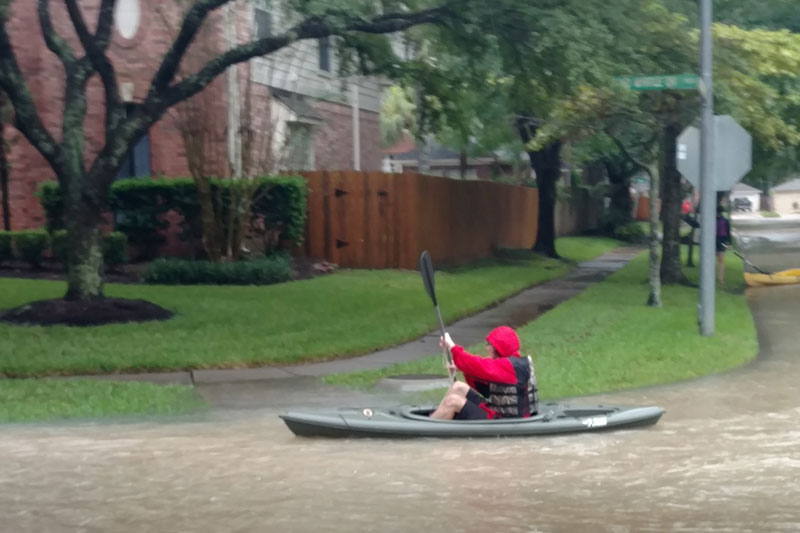Maryland was in a state of emergency on Sunday, as flash floods ripped through a Baltimore suburb called Ellicott City.
Heavy rain over the weekend left the towns of Ellicott City and Catonsville with water rushing through the streets. The National Weather Service is predicting another rush of flooding as well.
Ellicott City’s Main Street was destroyed by flash floods once before, in 2016. That storm killed two people and destroyed several businesses. Now it’s happening a second time in under two years.
Floodwater rose around parked cars and trucks. In some places, the water was above the first floor of buildings. The Howard County Fire & EMS agency sent tweets asking people to evacuate the area: “DO NOT stand and watch the water rescues – leave the area and do not put yourself in harms way.”
Governor Larry Hogan was also on the scene. He tweeted that he’s on location “surveying the damage”. Although there are no confirmed fatalities, information is still incoming about the extent of the damage. Additionally, a 39-year-old man, Eddison Alexander, has been reported missing by his family, and a search is underway for him.
Residents of the Ellicott City area told The Baltimore Sun that the flooding seemed to be “worse” than the storm in July 2016. That previous flood did tens of millions of dollars worth of damage to Ellicott City. It required major reconstruction efforts on the historic town’s Main Street.
As of around 9:30 AM today, nearly 600 households in Howard County were without power. The rainstorm also left about 770 without power in Baltimore City and the surrounding counties. BGE, the utilities provider in these areas, predicted long outages for gas and electric services in areas with heavy flooding.
This tragedy in Howard County comes on the heels of Maryland Governor Larry Hogan’s announcement, two weeks prior, that the state and county had been awarded more than $1 million by FEMA to spend on flood-prevention projects. Hogan had called this grant an “important step in the rebirth of downtown Ellicott City.”
Now, Hogan will likely be forced to defend Maryland’s slow response to the 2016 flooding. “It took two years to get the money and it’s ironic that we just got it this month,” he told the media. “Nobody expected another storm of this magnitude to come two years later because, as I said, they’re only supposed to happen every 1,000 years.”
But that’s not a good enough answer. Nobody expected the first flood either, even though they should have.
Hogan and FEMA and Howard County Maryland all knew that Ellicott City was situated in a flood-prone area. The Tiber River basin, which contains Ellicott City, gets frequent thunderstorms. The historic downtown area is constructed within a narrow basin, into which several deep stream valleys converge. This makes the town flood-prone.
Given that destructive flash-flooding already happened once in Ellicott City, authorities should have expected future flooding. If they had expected it, they could have prepared for it. Not preparing for it to happen again doesn’t seem like a simple mistake. It seems foolish.
And as natural disasters increase in scope across the country, governments must be prepared for increasingly devastating events. Knowing that a town is nestled in a flood zone, and still waiting two years to do anything to divert flooding, seems like more than just “ironic” timing.
It seems like negligence.
Undoubtedly there will be accusations flying back and forth between the state, local, and federal authorities, all trying to shift the blame onto the other parties. But that $1 million dollars for flood-prevention would have done a lot more good if it had been spent after the first flood, instead of after the second one.
Maryland authorities failed to apply the ounce of prevention that Ellicott City needed. Now we’ll see whether they mishandle the requisite pound of cure as well.























